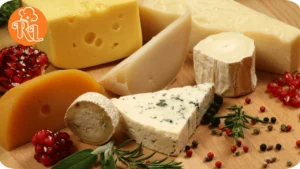Cheese is one of the world’s most beloved and versatile foods, enjoyed in countless dishes and cuisines across the globe. From a gooey grilled cheese sandwich to the perfect topping on a pizza or even a luxurious cheeseboard for a dinner party, cheese comes in many forms and flavors. With its rich history, diverse varieties, and nutritional benefits, cheese remains a staple in kitchens everywhere.
This article aims to provide a detailed exploration of cheese, including its history, types, health benefits, recipes, and serving suggestions. We’ll also consider ideas for expanding cheese-related content into various culinary projects and delve into the many ways cheese can enrich different meals, making it an ideal focal point for ongoing recipe development.
1. Introduction to Cheese
Cheese is an ancient and highly versatile food, loved by people all over the world. It’s made from milk – typically from cows, goats, sheep, or buffalo – that undergoes coagulation, fermentation, and aging processes to achieve different textures, flavors, and aromas. The wide variety of cheese types means that there is a cheese suitable for almost every dish, and many people find it indispensable in their kitchens.
Cheese can be enjoyed on its own, paired with other foods like fruits and wine, or incorporated into both savory and sweet recipes. Its range in flavor—from mild and creamy to sharp and pungent—makes it an ingredient with endless possibilities. Moreover, cheese’s long history and cultural significance add to its appeal, making it not just a food but a culinary treasure.
2. The Fascinating History of Cheese
The origins of cheese are ancient, with evidence of cheese-making dating back more than 7,000 years. While the exact moment cheese was invented remains a mystery, it is widely believed that cheese was first discovered by accident when early humans stored milk in containers made from animal stomachs. The enzyme rennet, found in the stomach lining of certain animals, caused the milk to curdle and separate into solid curds and liquid whey, thus producing cheese.
Ancient cultures in Mesopotamia, Egypt, and Greece began refining the cheese-making process. By the time of the Roman Empire, cheese-making had become widespread, and different regions of Europe started developing their own unique varieties. Roman soldiers and travelers helped spread cheese across Europe, where it became a staple of many regional diets.
During the Middle Ages, monasteries became centers for cheese production, with monks developing more sophisticated aging techniques that resulted in many of the beloved cheeses we enjoy today. As cheese-making spread throughout Europe and beyond, different regions began specializing in specific types of cheese, many of which are still celebrated today—such as Parmigiano-Reggiano from Italy, Brie from France, and Cheddar from England.
Today, cheese is a global industry, with modern technology allowing for mass production while artisanal cheese-makers continue to preserve traditional methods. The result is an incredibly diverse range of cheeses, each with its own distinct flavor, texture, and cultural significance.
3. Major Categories of Cheese
Understanding the major categories of cheese is key to appreciating their unique qualities and knowing how best to use them in recipes. Cheese can be categorized by its texture, moisture content, aging process, and flavor profile. Below, we explore the main types of cheese and their culinary uses.
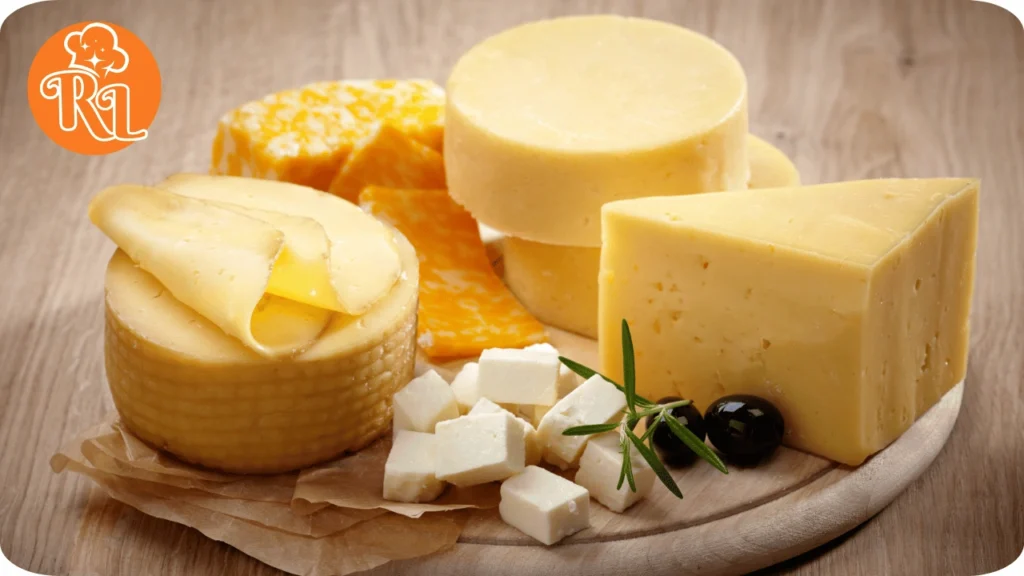
Fresh Cheeses
- Examples: Ricotta, Mozzarella, Feta, Mascarpone, Cottage Cheese
- Characteristics: Fresh cheeses are typically not aged and have a high moisture content. They tend to be soft, mild in flavor, and creamy in texture.
- Uses: Fresh cheeses are highly versatile. Mozzarella is famous for its role in pizza, while ricotta is commonly used in lasagna, stuffed pasta, and desserts like cannoli. Feta adds a salty, tangy flavor to salads, and mascarpone forms the creamy base for Italian tiramisu.
Recipe Ideas:
- Caprese Salad with Fresh Mozzarella: A classic dish combining mozzarella with tomatoes, basil, olive oil, and balsamic vinegar.
- Ricotta Pancakes: Light, fluffy pancakes made with creamy ricotta cheese, perfect for breakfast or brunch.
- Greek Feta Salad: A refreshing dish made with cucumber, tomatoes, olives, and feta cheese.
Soft-Ripened Cheeses
- Examples: Brie, Camembert
- Characteristics: Soft-ripened cheeses are known for their soft, edible rinds and creamy interiors. They are aged for a short period, allowing them to develop a mild to robust flavor depending on the cheese.
- Uses: These cheeses are often served at room temperature as part of a cheeseboard or baked into dishes like baked Brie. Their creamy texture makes them perfect for spreading on bread or crackers.
Recipe Ideas:
- Baked Brie with Honey and Almonds: A warm, gooey Brie drizzled with honey and topped with toasted almonds, served with crusty bread.
- Brie and Apple Grilled Cheese: A gourmet twist on a classic sandwich, featuring melted Brie and slices of crisp apple.
- Camembert Crostini with Fig Jam: Crispy crostini topped with creamy Camembert and sweet fig jam, ideal for appetizers.
Semi-Soft Cheeses
- Examples: Havarti, Fontina, Gouda, Munster
- Characteristics: Semi-soft cheeses are slightly firmer than soft-ripened varieties and have a smooth, elastic texture. Their flavor can range from mild to more intense depending on how long they are aged.
- Uses: These cheeses are great for melting and can be used in sandwiches, grilled cheese, or melted into fondues. They are also excellent in cheeseboards.
Recipe Ideas:
- Gouda Grilled Cheese with Caramelized Onions: A savory grilled cheese sandwich with melted Gouda and sweet caramelized onions.
- Havarti and Tomato Tart: A flaky pastry tart filled with Havarti cheese and juicy tomatoes, perfect for brunch or as an appetizer.
- Fontina Mac and Cheese: A creamy, decadent mac and cheese featuring smooth, melted Fontina.
Semi-Hard and Hard Cheeses
- Examples: Cheddar, Parmesan, Gruyère, Manchego, Pecorino Romano
- Characteristics: These cheeses have a lower moisture content and are typically aged for longer periods, resulting in firmer textures and more concentrated flavors. They can be crumbly or smooth, depending on the variety.
- Uses: Hard cheeses are often grated over dishes, used in sauces, or served in slices. Cheddar is a favorite in mac and cheese and sandwiches, Parmesan is essential in pasta dishes, and Gruyère is key in fondues and quiches.
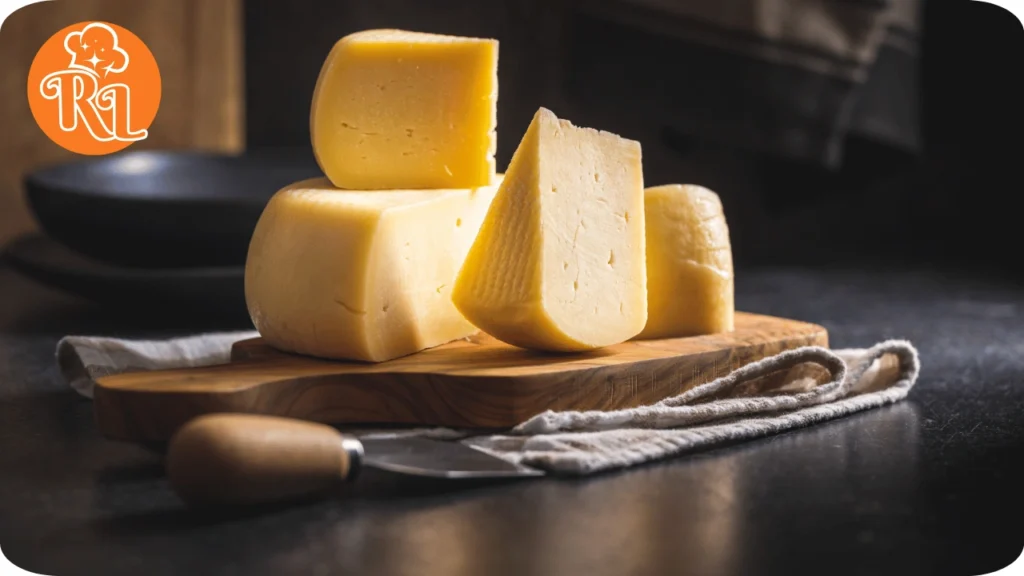
Recipe Ideas:
- Classic Macaroni and Cheese: A comforting dish made with sharp cheddar cheese and topped with breadcrumbs.
- Parmesan Risotto: A creamy, savory risotto made with Arborio rice and freshly grated Parmesan cheese.
- Gruyère French Onion Soup: A rich soup topped with melted Gruyère and toasted bread.
Blue Cheeses
- Examples: Roquefort, Gorgonzola, Stilton
- Characteristics: Blue cheeses are easily recognizable due to their blue or green veins, which come from the mold Penicillium. They are typically strong, tangy, and can range from creamy to crumbly.
- Uses: Blue cheese adds bold flavor to salads, sauces, and meats. It pairs well with fruits like pears and figs, and its pungency makes it a great addition to cheeseboards.
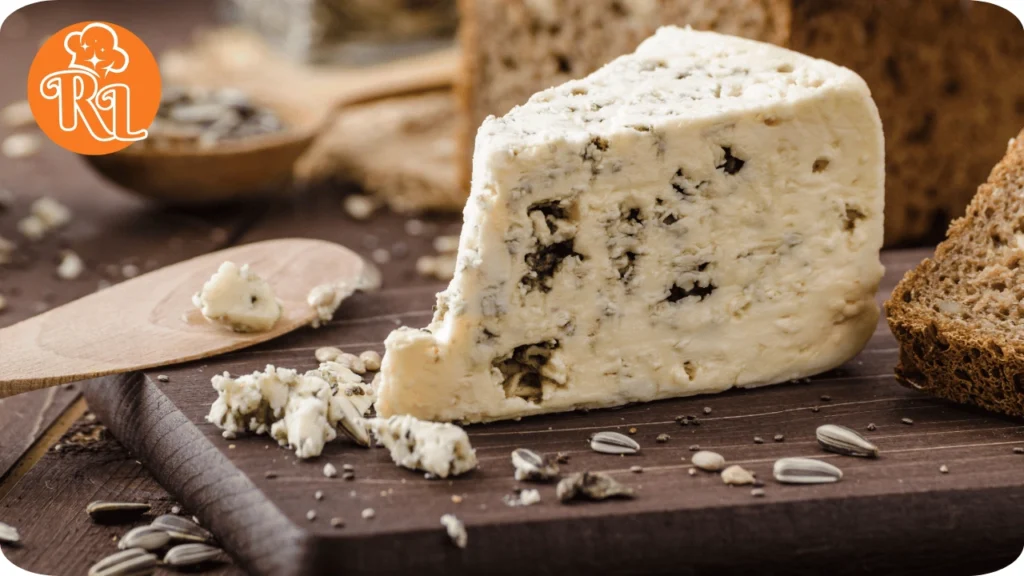
Recipe Ideas:
- Blue Cheese and Walnut Salad: A mix of fresh greens, crumbled blue cheese, and walnuts, topped with a balsamic vinaigrette.
- Gorgonzola Sauce for Steak: A rich, creamy Gorgonzola sauce served over grilled steak for a flavorful main course.
- Stilton and Pear Crostini: Toasted crostini topped with tangy Stilton and slices of ripe pear for an easy but elegant appetizer.
Processed Cheeses
- Examples: American Cheese, Velveeta, Cheese Spreads
- Characteristics: Processed cheeses are made by combining natural cheeses with emulsifiers and other additives to create a smooth, consistent texture. They melt easily and have a mild, creamy flavor.
- Uses: Processed cheeses are popular in fast food, sandwiches, and comfort foods like nachos and mac and cheese due to their superior melting qualities.
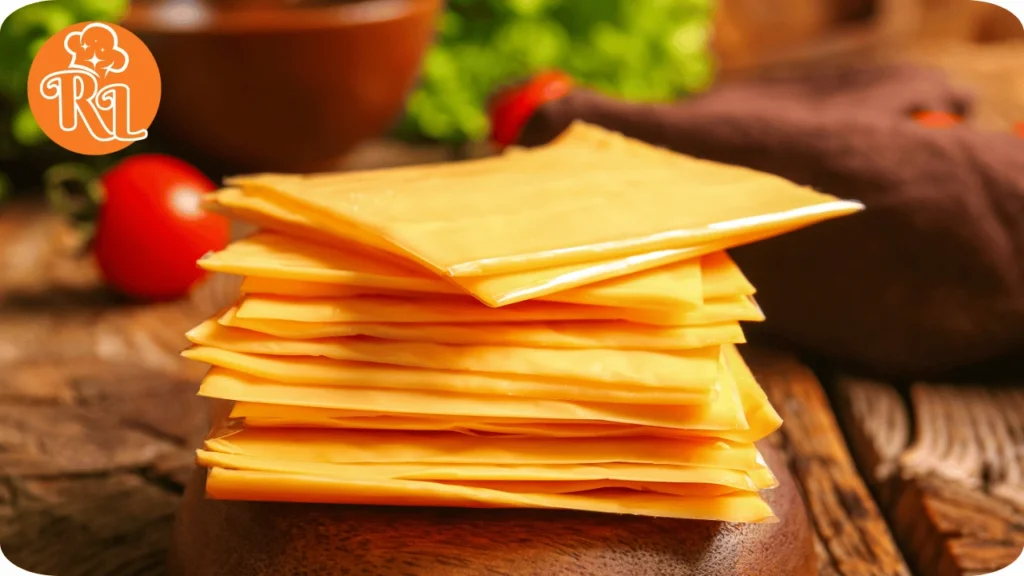
Recipe Ideas:
- Classic Cheeseburger: Juicy burgers topped with melted American cheese, served with fries or a side salad.
- Nachos with Cheese Sauce: A crowd-pleasing snack made with Velveeta cheese sauce and loaded with toppings like jalapeños and sour cream.
- Velveeta Cheese Dip: A creamy, smooth dip perfect for parties, served with tortilla chips or pretzels.
4. Health Benefits of Cheese
Cheese is not only a delicious ingredient but also a nutrient-dense food that can contribute to a balanced diet when consumed in moderation. It’s a rich source of protein, calcium, vitamins, and healthy fats, making it a valuable part of many people’s diets.
- Protein: Cheese contains high-quality protein, which is essential for muscle repair, growth, and overall health.
- Calcium: Cheese is an excellent source of calcium, important for maintaining strong bones and teeth. This is particularly important for growing children, adolescents, and older adults at risk of osteoporosis.
- Vitamins: Cheese provides essential vitamins like vitamin A (good for vision and skin health) and vitamin B12 (important for red blood cell production and brain function).
- Healthy Fats: While cheese does contain saturated fat, many types also contain healthy fats, such as conjugated linoleic acid (CLA), which may help reduce body fat and promote heart health.
- Probiotics: Some aged cheeses, especially those made from raw milk, contain beneficial bacteria that can aid in digestion and improve gut health.
Moderation is Key: While cheese offers many health benefits, it is also high in calories, fat, and sodium. Those monitoring their intake for health reasons should consume cheese in moderation, particularly processed varieties that are higher in sodium and artificial additives.
5. Cheese in Global Cuisine
Cheese is an integral part of many global cuisines, contributing to the flavor and texture of countless traditional dishes. Below are just a few examples of how cheese is used around the world:
Italian Cuisine
Italy is synonymous with cheese, and its culinary heritage would not be the same without it. Mozzarella, Parmesan, Ricotta, and Gorgonzola are some of the most famous Italian cheeses.
- Mozzarella: Used in pizza, caprese salads, and pasta dishes.
- Parmigiano-Reggiano: Grated over pasta or risotto for a salty, umami flavor.
- Ricotta: Often used in desserts like cannoli or savory dishes like lasagna.
Iconic Dish: Lasagna al Forno – Layers of pasta, meat sauce, and ricotta cheese, topped with melted mozzarella and Parmesan.
French Cuisine
France is known for its rich cheese-making traditions, producing over 1,000 varieties. Brie, Camembert, and Roquefort are just a few of the iconic French cheeses.
- Brie and Camembert: Often served as part of a cheeseboard, paired with fruits and nuts.
- Roquefort: Used in salads or sauces, adding a sharp, tangy flavor.
Iconic Dish: Quiche Lorraine – A savory tart made with Gruyère cheese, eggs, and bacon, baked in a flaky pastry crust.
Mexican Cuisine
In Mexico, cheese is used to add creamy or salty elements to many traditional dishes. Queso fresco, Cotija, and Oaxaca cheese are popular varieties.
- Queso Fresco: A fresh, crumbly cheese used in tacos, enchiladas, and salads.
- Cotija: A salty cheese sprinkled over dishes like elote (grilled corn).
Iconic Dish: Quesadillas – Grilled tortillas filled with melted Oaxaca cheese and other fillings, such as chicken or vegetables.
Swiss Cuisine
Switzerland is renowned for its use of cheese in traditional comfort foods, especially those involving melted cheese.
- Gruyère: Used in fondue and French onion soup.
- Emmental: Famous for its “holes” and used in classic Swiss dishes.
Iconic Dish: Fondue – A communal dish where melted cheese (often Gruyère and Emmental) is served with bread for dipping.
American Cuisine
In the United States, cheese plays a central role in comfort foods and fast foods, with processed cheese like American cheese being a staple in many households.
- American Cheese: Used in cheeseburgers, grilled cheese sandwiches, and macaroni and cheese.
- Monterey Jack: A mild cheese used in Tex-Mex cuisine, such as quesadillas and enchiladas.
Iconic Dish: Macaroni and Cheese – A creamy pasta dish made with cheddar or American cheese, often baked with a crispy breadcrumb topping.
6. Recipes Featuring Cheese for Every Meal
Cheese can be incorporated into dishes for any meal, from breakfast to dessert. Below, we explore a range of cheese-based recipes that can be enjoyed throughout the day.
Breakfast with Cheese
Cheese adds richness and flavor to many breakfast dishes, helping to start the day off on a satisfying note.
- Cheese Omelet: A simple, classic omelet filled with cheddar, Gruyère, or Swiss cheese, along with vegetables or ham.
- Cheese and Bacon Scones: Savory scones made with sharp cheddar and crispy bacon, perfect for breakfast on the go.
- Cheese-Filled Crepes: Light crepes stuffed with ricotta or mascarpone cheese, topped with fresh fruit or honey.
Lunch and Dinner Recipes with Cheese
For heartier meals, cheese can elevate main courses and side dishes.
- Classic Grilled Cheese Sandwich: A comfort food favorite, made with melted American or cheddar cheese on buttered bread, often paired with tomato soup.
- Four-Cheese Pizza: A decadent pizza topped with mozzarella, Parmesan, Gorgonzola, and Fontina cheeses.
- Cheese-Stuffed Meatballs: Ground beef or turkey meatballs stuffed with mozzarella or Gouda, served in marinara sauce.
- Eggplant Parmesan: Sliced eggplant breaded and baked with marinara sauce and plenty of melted mozzarella and Parmesan.
Cheese in Desserts
Cheese isn’t just for savory dishes—it can also play a starring role in sweet treats.
- Cheesecake: A rich, creamy dessert made with cream cheese, often topped with fruit or chocolate.
- Mascarpone Tiramisu: An Italian classic made with mascarpone cheese, coffee-soaked ladyfingers, and cocoa powder.
- Ricotta Cannoli: Crisp pastry shells filled with sweetened ricotta cheese and flavored with chocolate chips or candied fruit.
7. Cheese Pairing and Storage Tips
Properly storing and serving cheese is essential for maintaining its flavor and texture. Here are some tips for cheese pairing and storage:
Storing Cheese
- Wrap Cheese Properly: Use wax paper or cheese paper instead of plastic wrap, as it allows the cheese to breathe while maintaining moisture.
- Keep in the Fridge: Store cheese in the refrigerator, but avoid placing it in the coldest part, where it may dry out.
- Use Airtight Containers for Hard Cheeses: Hard cheeses like Parmesan should be stored in airtight containers to prevent them from becoming too dry.
Serving Cheese
- Bring to Room Temperature: Cheese should be served at room temperature to bring out its full flavor. Take it out of the fridge about 30 minutes before serving.
- Pair with Complementary Foods: Pair cheese with fruits (grapes, apples, figs), nuts (almonds, walnuts), and bread or crackers. For wine pairings, soft cheeses like Brie go well with Chardonnay, while aged cheeses like Parmesan pair beautifully with red wines like Cabernet Sauvignon.
8. Cheese-Based Culinary Project Ideas
The world of cheese offers endless possibilities for expanding content and developing a series of articles or recipes. Below are some potential ideas for a cheese-focused culinary project:
The Ultimate Guide to Cheddar Cheese Recipes
Cheddar is one of the most popular and versatile cheeses, making it an ideal focal point for a recipe series. This guide could include recipes for cheddar-based dishes, such as mac and cheese, cheddar biscuits, grilled cheese, and more.
How to Build the Perfect Cheese Board
Creating a cheese board is both an art and a science. A detailed guide could offer tips on selecting cheeses, arranging them, and pairing them with complementary foods like fruits, nuts, and crackers.
Exploring French Cheeses: Brie, Camembert, and Beyond
France is home to many beloved cheeses. A series dedicated to French cheeses could explore their history, production methods, and how to use them in cooking. Recipes could include baked Brie, Brie en Croûte, and Camembert fondue.
Cheese for Every Meal: Breakfast, Lunch, and Dinner Recipes
A comprehensive collection of cheese-based recipes could cover every meal of the day, from breakfast omelets to lunch sandwiches to dinner entrees like lasagna and casseroles. Each recipe could feature a different type of cheese.
Blue Cheese: A Bold Flavor Adventure
For cheese lovers who enjoy strong flavors, a series focused on blue cheese could be a hit. It could include pairing suggestions, recipes for blue cheese salads, dressings, and even sauces for meats.
Healthy Cheese Recipes for Everyday Meals
While cheese can be indulgent, it can also be part of a balanced diet. A series of articles focused on healthy cheese recipes could highlight lower-fat cheeses, portion control, and pairing cheese with nutrient-dense foods like vegetables and whole grains.

9. Conclusion
Cheese is an incredibly diverse and beloved food that enhances meals all over the world. Whether you’re enjoying it in its simplest form on a cheeseboard or using it as a key ingredient in a complex recipe, cheese brings a richness and depth of flavor that few other ingredients can match.
This article serves as a comprehensive guide to cheese and its many varieties, offering insight into its history, health benefits, and how it can be used in cooking. Additionally, we’ve laid the groundwork for expanding content into different culinary projects, from recipes to pairing guides, to educational explorations of cheese-making traditions. Whether you’re a professional chef or a home cook, cheese offers endless possibilities for creativity and enjoyment in the kitchen.

